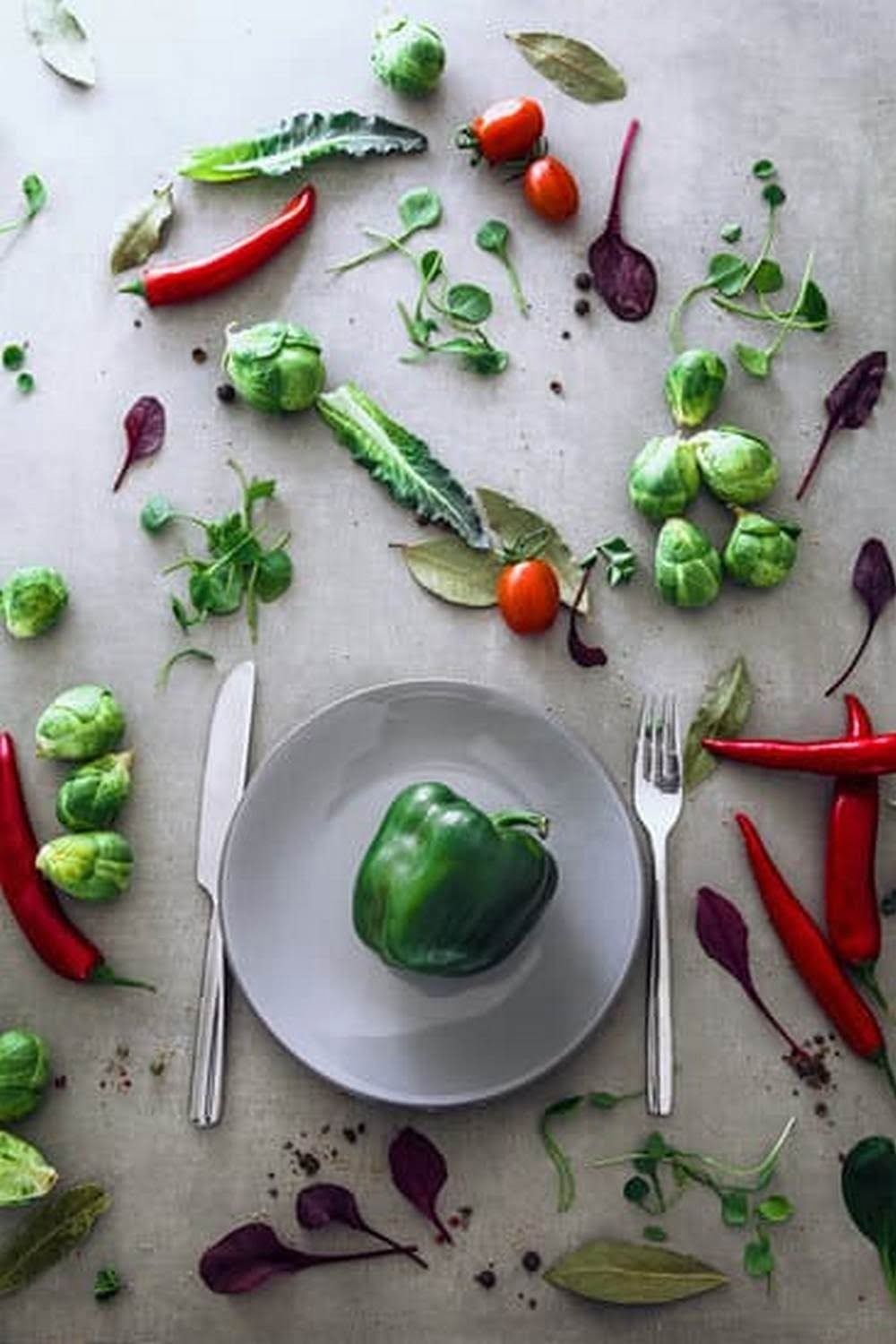Are you interested in starting your own vegetable garden but don’t know where to begin? Planning is a crucial step in successful vegetable gardening, and having a proper vegetable gardening planner can make all the difference. From selecting the right vegetables for your garden to maintaining and caring for it, a well-thought-out plan can help you stay organized and ensure a bountiful harvest.
When it comes to vegetable gardening, planning is key. It involves understanding the importance of timing, spacing, and crop rotation to maximize your garden’s potential. With the help of a vegetable gardening planner, you can map out and schedule important tasks such as planting, watering, fertilizing, and harvesting to achieve an abundant and thriving garden.
Not only does planning help you stay organized, but it also allows you to select the right vegetables for your specific growing conditions and preferences. By carefully designing and organizing your vegetable garden space, creating a planting schedule, and utilizing companion planting techniques, you can optimize your garden’s layout for success. Additionally, keeping a vegetable gardening journal can help track your progress and learn from both successes and failures.
And with the advancement in technology, there are even apps available that act as vegetable gardening planners in order to streamline the process further. Whether you’re new to vegetable gardening or looking to improve your current practices, understanding the importance of planning is essential for a thriving garden.
Selecting the Right Vegetables for Your Garden
When it comes to vegetable gardening, one of the most important steps is selecting the right vegetables for your garden. Before you start planting, consider the climate in your area and the amount of sunlight your garden gets. Different vegetables have different sunlight and temperature requirements, so it’s essential to choose ones that will thrive in your specific conditions.
Another factor to consider when selecting vegetables for your garden is your family’s preferences and dietary needs. Think about what vegetables you consume most often and which ones you enjoy eating. This will not only ensure that you are growing produce that you will actually use, but it can also save you money on groceries in the long run.
Furthermore, take into account the space available in your garden. Some vegetables, like zucchini and squash, require a lot of room to sprawl, while others, like lettuce and spinach, can be grown in smaller spaces or even in containers. By planning out which vegetables to grow based on available space, you can maximize your garden’s yield.
Finally, using a vegetable gardening planner app can be extremely helpful in this stage of planning. These apps often provide information on which vegetables are suitable for your specific region and climate, making the selection process much easier.
| Factors to Consider | Examples |
|---|---|
| Climate and sunlight requirements | Tomatoes (require full sun) |
| Family’s preferences and dietary needs | Broccoli (high in nutrients) |
| Available space | Radishes (suitable for small spaces or containers) |
Designing and Organizing Your Vegetable Garden Space
The key to a successful vegetable garden lies in its design and organization. When it comes to designing and organizing your vegetable garden space, there are several factors to consider. Firstly, it is important to think about the layout and placement of your vegetables. Some vegetables require more sunlight than others, so it is crucial to plan accordingly to ensure that each plant gets the appropriate amount of sun.
In addition, considering the space needed for each type of vegetable is also important. Some plants need more room to grow than others, so be sure to research the specific spacing requirements for each vegetable you plan to include in your garden.
Furthermore, when organizing your vegetable garden space, it is beneficial to consider intercropping and companion planting techniques. These methods can help maximize the use of space in your garden while also benefiting the overall health and growth of your vegetables. For example, planting certain vegetables together can help deter pests or improve soil fertility.
It’s important to keep track of all these details when planning your vegetable garden space. This is where a good vegetable gardening planner comes in handy.
With a planner app specifically designed for vegetable gardening, you can easily map out your garden space, keep track of plant spacing requirements, and even get reminders for when it’s time to harvest or replant certain vegetables. A well-organized and thoughtfully designed vegetable garden space sets the foundation for a successful harvest season.
Creating a Planting Schedule for Your Vegetables
When it comes to successful vegetable gardening, creating a planting schedule is crucial. This schedule will help you organize and plan when to plant your vegetables, taking into consideration factors such as the local climate and the specific requirements of each vegetable. Here are some tips for creating an effective planting schedule:
1. Research Vegetable Planting Times: Before creating your planting schedule, it’s important to research the specific planting times for each vegetable in your area. Some vegetables thrive in cooler temperatures, while others prefer warmer weather. Understanding these planting times will ensure that you are scheduling your plantings at the most optimal times.
2. Consider Succession Planting: Succession planting involves sowing small amounts of seeds at regular intervals to ensure a continuous harvest throughout the growing season. Take this into account when creating your planting schedule so that you can stagger your plantings and extend the harvest period.
3. Utilize a Vegetable Gardening Planner App: There are numerous apps available that can help you create and manage your planting schedule. These apps often provide customized recommendations based on your location and the vegetables you intend to grow. They may also offer features such as reminders and notifications to keep you on track with your planting schedule.
By following these tips and utilizing tools such as a vegetable gardening planner app, you can create an organized and efficient planting schedule for your vegetable garden. This will not only help you maximize your harvest but also ensure that you are making the most of your gardening efforts throughout the growing season.
Maintaining and Caring for Your Vegetable Garden
Once you have planted your vegetable garden, it is important to focus on maintaining and caring for the plants to ensure a successful harvest. Here are some essential tips for taking care of your vegetable garden:
1. Watering: Proper watering is crucial for the health of your vegetables. Different types of vegetables have varying water needs, so it is important to understand the specific requirements of each plant. A good rule of thumb is to water deeply and less frequently to encourage strong root growth.
2. Weeding: Keeping your vegetable garden free from weeds is essential to prevent competition for nutrients and sunlight. Regularly inspect your garden and remove any unwanted plants that may hinder the growth of your vegetables.
3. Fertilizing: Providing adequate nutrients to your plants is essential for their overall health and production. Consider using organic fertilizers or compost to nourish your soil and promote the growth of healthy vegetables.
In addition to these basic maintenance tasks, it is important to keep an eye out for any signs of pests or diseases in your vegetable garden. By regularly monitoring your plants, you can take proactive measures to address any issues before they become serious threats.
Remember, utilizing a vegetable gardening planner can greatly assist in keeping track of all these maintenance tasks and help ensure that you are providing proper care for your garden throughout the growing season. With a well-organized schedule in place, you can stay on top of watering, weeding, fertilizing, and pest control, ultimately leading to a bountiful harvest from your vegetable garden.
Utilizing Companion Planting Techniques
When it comes to vegetable gardening, utilizing companion planting techniques can be a game-changer for the overall health and productivity of your garden. Companion planting involves strategically placing different plants together in a way that benefits one or both of the plants. This technique can help control pests, attract beneficial insects, improve pollination, and maximize space in your garden.
Understanding Companion Planting
Companion planting is based on the idea that certain plants can either enhance or inhibit the growth and development of other plants when grown in close proximity. For example, planting marigolds next to tomatoes can help repel pests that commonly affect tomato plants. Similarly, growing beans near corn can provide natural support for the tall corn stalks while fixing nitrogen in the soil, which benefits both plants.
Examples of Compatible Plant Combinations
Some classic examples of companion planting include planting basil near tomatoes to improve their flavor and repel pests, interplanting carrots and onions to confuse carrot flies, and growing radishes with cucumbers to deter cucumber beetles. It’s important to research which plants are compatible with each other before planning your garden layout to ensure successful companion planting.
Implementing Companion Planting in Your Garden
To effectively utilize companion planting techniques in your vegetable garden, start by creating a layout that takes into account plant compatibility. Be sure to consider factors such as plant height, sunlight requirements, and watering needs when organizing your garden space. Additionally, consider including flowering plants that attract pollinators and beneficial insects as part of your companion planting strategy.
By incorporating companion planting techniques into your vegetable gardening plans, you can create a harmonious and thriving ecosystem within your garden while reducing the need for chemical pesticides and fertilizers. Using a vegetable gardening planner app can also help you keep track of compatible plant combinations and plan your garden layout accordingly for optimal results.
How to Keep a Vegetable Gardening Journal
Keeping a vegetable gardening journal is a valuable tool for any gardener, whether you are a beginner or have years of experience. This journal allows you to track the progress of your garden, learn from your successes and failures, and make improvements each year. By recording important details about your vegetable garden, you can also create a valuable resource that will help you make informed decisions in the future.
The Benefits of Keeping a Gardening Journal
One of the main benefits of keeping a gardening journal is that it allows you to track the specific needs and preferences of each type of vegetable in your garden. You can record information such as planting dates, growth patterns, pest and disease problems, and harvest yields. By doing so, you can identify which vegetables thrive in your particular climate and soil conditions, allowing you to make adjustments to future planting schedules.
How to Set Up Your Gardening Journal
When setting up your gardening journal, it is important to include sections where you can record essential information about each vegetable variety. This may include details such as seed sources, planting depth and spacing, recommended fertilization practices, and any unique requirements for each crop. Additionally, leave space for notes on weather conditions throughout the growing season, as this will help you identify patterns that may impact future plantings.
Utilizing Your Vegetable Gardening Planner App
In today’s digital age, many gardeners are turning to vegetable gardening planner apps to keep track of their gardens’ progress. These apps often include features such as customizable planting calendars, reminders for tasks like watering and fertilizing, photo storage capabilities for tracking plant growth, and access to helpful resources and tips. By utilizing these apps in conjunction with traditional gardening journals, gardeners can create a comprehensive system for organizing and managing their vegetable gardens efficiently.
Exploring the Benefits of Using a Vegetable Gardening Planner App
In conclusion, incorporating a vegetable gardening planner into your gardening routine can greatly benefit both novice and experienced gardeners. By understanding the importance of planning in vegetable gardening, selecting the right vegetables for your garden, and designing and organizing your space, a vegetable gardening planner can help streamline and optimize the entire process.
Creating a planting schedule for your vegetables, maintaining and caring for your garden, and utilizing companion planting techniques can all be made more efficient with the use of a vegetable gardening planner app. The ability to keep track of important tasks, record observations, and receive reminders or notifications can greatly contribute to the success of your vegetable garden.
Furthermore, keeping a vegetable gardening journal is an essential practice that can be made easier with the assistance of a digital planner app. Having a centralized location to document growth progress, note any issues or successes, and track plant varieties can provide valuable insight for future seasons. Overall, by exploring the benefits of using a vegetable gardening planner app, you can enhance your gardening experience and increase the likelihood of a successful harvest.
Frequently Asked Questions
How Do I Plan My Vegetable Garden Layout?
Planning your vegetable garden layout involves considering factors like sunlight, water access, and plant compatibility. It’s essential to sketch out the area, deciding where each vegetable will go based on its growing needs.
What Is the Best Month to Start a Vegetable Garden?
The best month to start a vegetable garden varies depending on your climate and the vegetables you want to grow. In general, early spring is a good time for cool-season crops, while late spring is perfect for warm-season crops.
Is There an App for Planning a Garden?
Yes, there are several apps available for planning a garden. These apps can help you design your garden layout, track plant growth, and provide tips and reminders for caring for your plants. They can be a useful tool for both novice and experienced gardeners alike.

If you’re looking to get into vegetable gardening, or are just looking for some tips on how to make your current garden better, then you’ve come to the right place! My name is Ethel and I have been gardening for years. In this blog, I’m going to share with you some of my best tips on how to create a successful vegetable garden.





